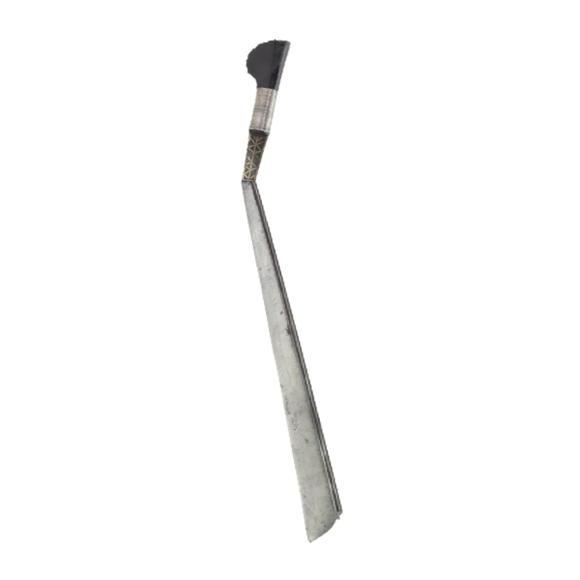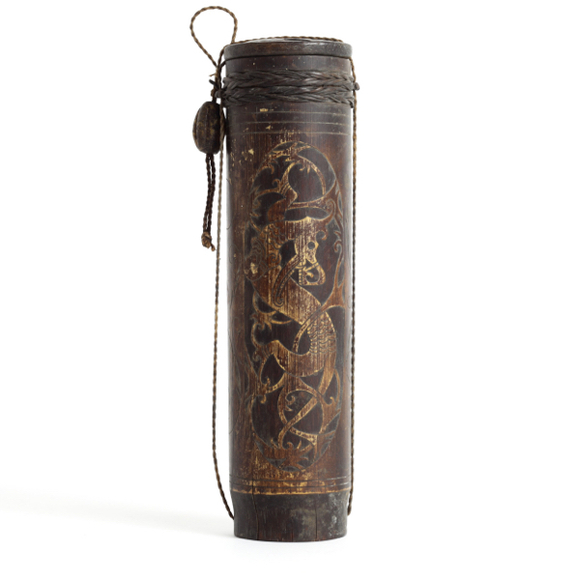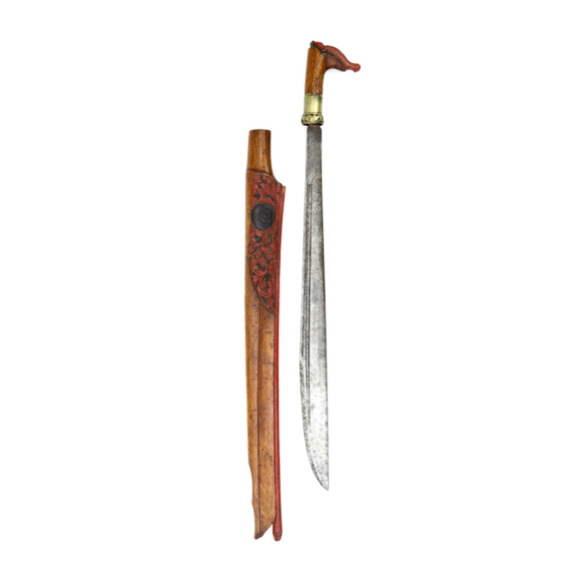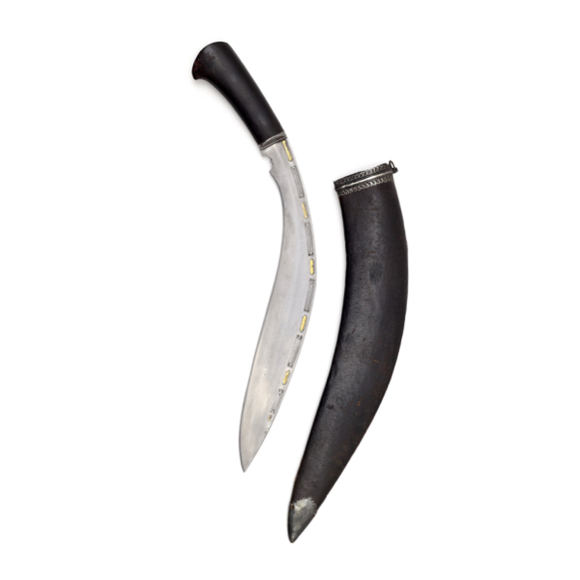Language: Murut
Source: Shelford, 1901
Description
Pakayun literally means "what I wear". It was provided by Shelford as the name of a type of saber of the Murut people of northern Borneo and has stuck among Western collectors since. The Murut themselves call this sword a parapat.1
The parapat is a large saber used by the Murut people of the northern part of Borneo. It is characterized by a long, narrow blade of even width from base to tip, ending in a downward sloped point. The blade flats remain undecorated. Some have one or two grooves.
The hilt is invariably made of wood, of a characteristic forked shape. In between the two forked ends is usually a carving in wood, on the more ornate examples the carving extends beyond the forked pommel. Part of the hilt is covered by a brass sleeve that widens to a small guard on the blade side, called umbo. The brass sleeve seldom reaches to the forked end, but usually stops a little short of it, the remainder being covered with plaited rattan.
The scabbard is usually made of two slabs of wood, connected with rattan or metal strips or wire. The spaces between the wrappings are often decorated with geometric patterns. To the inner side is attached a bark pocket decorated with hair.2


A pakayun.
Mandarin Mansion inventory 2021
Notes
1. Albert G. van Zonneveld; Traditionele wapens van Borneo, de uitrusting van de koppensnellers. Deel III, zwaarden en messen. Sunfield Publishing, 2021. Page 169.
2. R. Shelford; A provisional classification of the swords of the Sarawak tribes. Journal of the Anthropological Institute of Great Britain and Ireland, Vol. 31. January-June 1901. Presented 12th November 1901.






